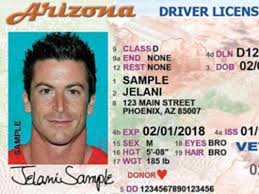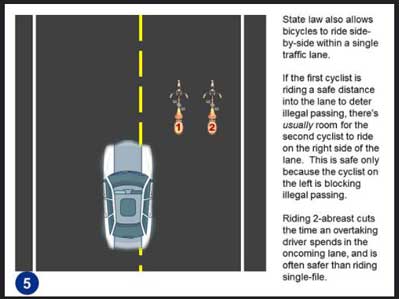Phoenix city council quietly (well hey, I never heard about it, but it was in the paper) passed a rather sweeping pedicab ordinance in July 2008. The regulations went into effect August 1, 2008. Continue reading “Phoenix Pedicab Ordinance”
Author: ArizonaBikeLaw
Noted economist supports Gore carbon tax
Noted conservative economist Aurthur Laffer, writing in Dec 18, 2008 WSJ op-ed Obama Should Forget About Energy Independence says he “strongly supports” the idea of an carbon tax offsetted against payroll taxes, calling it a “win-win”…
“The only real solution is Al Gore’s proposal to offset a carbon tax dollar-for-dollar with either an income or payroll tax reduction. If a carbon tax increase were offset dollar-for-dollar with an income tax rate cut, I for one would strongly support the policy. The economy would benefit because the progressive income tax does far more damage than a carbon tax would, and we’d use less oil. It’s a win-win situation. Yet this perspective appears to be totally outside the Obama team’s ken.”
Miles driven off sharply in 2008
First high gas prices, then the economic slowdown has meant a sharp decrease in miles driven in Arizona. “Arizona drivers put 295 million fewer miles on their cars in October compared with October last year, a 6 percent decline and the 11th consecutive month traffic has dropped”
It will be interesting to see what impact this has on crash rates for 2008. Arizona posted a huge drop in fatalities for 2007, the per-mile stats still have not been posted for 2007; though Arizona is perennially high compared to US as a whole. Continue reading “Miles driven off sharply in 2008”
New rules on license plate holders
New rules on license plate holders goes into effect Jan 1, 2009. Holders may not obscure any of the word “Arizona”. The law was passed in 2006, but delayed implementation until 2009 to allow dealers time to adjust.
“Law-enforcement officials say the law will help officers differentiate between in-state and out-of-state vehicles, a difficult task given the state’s profusion of specialty plates. Arizona issues license plates in more than 60 styles” amen to that, I think there are too many styles and it makes it harder for witnesses to get tag info.
Inquiring minds who want to know the actual verbiage, it from §28-2354(B),
28-2354. License plates; attachment
B. …A person shall maintain each license plate so it is clearly legible and so that the name of this state at the top of the license plate is not obscured.
…
Is walking risky?
Risk by mode share; walking is commonly considered “risky” but what does that mean? After all, all forms of transportation have some risk. When compared on a per-trip basis — as opposed to, say, a per-mile rate — we find that pedestrian fatalities are only slightly over-represented, both for Arizona and for US averages. For example, the Arizona estimated mode-share for all trips is 9.3%, whereas pedestrian fatalities were 12% of all traffic fatalities for the period 2003 to 2006.
Some authors have argued that walking (and cycling. See, e.g. Pucher) is wildly risky.
Reference:
ADOT’s Pedestrian Safety Action Plan Study, Working Paper 1, Exhibit 2-3.
Mionske: Can’t we do better?
In Bob Mionske’s Nov 20th column, Can’t we do better?, he asks “What do you think can be done about cyclist safety?”…
This may sound trite but, to improve cyclist’s safety I think the best thing to do is focus on improving traffic safety. I know it’s easy to read yet another apparent case of a negligent motorist hurting/killing a cyclist, getting off scot free and then feeling that “the system” is stacked against cyclists. But this loses sight of the fact that the problem isn’t limited to cyclists as victims, all categories of motorist’s victims, including other motorists, are treated just as shabbily. Cyclists’ fatalities represent less than 2% of the 41,059 traffic deaths (NHTSA 2007 Traffic Safety Annual Assessment – Highlights)
There are other, far larger, constituencies who are also subject to these same injustices; pedestrians, motorcycle operators, and the largest of all; passengers and innocent drivers. These groups — which includes just about everybody — are all victims of negligent drivers.
So the key, in my view, to tightening up laws which would actually punish negligent drivers is to broaden to appeal beyond the tiny community of active bicyclists to involve as many of these other groups as possible.
So without this becoming a laundry list — consider for example victim Lance Adams who was killed in Mesa, AZ April 2005 WHILE WALKING ON THE SIDEWALK… no criminal charges(prosecutor says “no likelihood of conviction”), no citations. Matthew Hayes Peterson said he blacked out, causing his vehicle to jump the curb. The young man who killed Lance had a previous speeding violation, and somewhat incredulously was ticketed for speeding again on Dec 14 (90mph! in a 65. As of story Feb 1, the outcome of that ticket was still pending).Prosecutors won’t seek criminal charges against a 21-year-old driver who ran over a Mountain View High School student last year, saying there isn’t enough evidence to prove he was impaired.
DRIVER WON’T BE CHARGED IN STUDENT DEATH
Jim Walsh. Arizona Republic. Jan 31, 2006.
Lance Adams, 15, was walking home from school on a sidewalk April 11 when he was struck and killed by an SUV driven by Matthew Hayes Peterson.
Mesa police sought manslaughter charges in late December after obtaining long-delayed test results from the Arizona Department of Public Safety’s crime lab on drugs found in Peterson’s system.
But Krystal Garza, a spokeswoman for Maricopa County Attorney Andrew Thomas, said in a statement that the case was sent back recently to Mesa police.
“Based on the information submitted to date, we don’t believe there is a reasonable likelihood of conviction,” Garza wrote. “One factor in this decision was there were no signs of impairment that could be tied to any substance, legal or illegal, in the suspect’s system.”
Peterson told police after the collision that he blacked out before his 2000 Toyota RAV4 jumped a curb in the 1400 block of North Lindsay Road and struck Adams.
The lab tests measured the amount of marijuana metabolite found in Peterson’s system, along with two prescription drugs identified by police as propoxyphene, a narcotic pain reliever and zolpidem, a sleeping medication.
[oddly, they listed the chemical names. The two prescription drugs found in Peterson’s system are commonly known by their brand names; Darvon, and Ambien. One wonders if Peterson had a prescription? What about the warnings, did Peterson heed them?]
Heed the warnings?
Ambien/zolpidem Warnings : “Patients should be cautioned against engaging in hazardous occupations requiring complete mental alertness or motor coordination such as operating machinery or driving a motor vehicle after ingesting the drug, including potential impairment of the performance of such activities that may occur the day following ingestion of Ambien”
Darvon/Propoxyphene Warnings: … may impair the mental and/or physical abilities required for the performance of potentially hazardous tasks, such as driving a car…”
Brown cloud season is back
 Brown cloud season is back. “Officials also urge people to consider driving less. Vehicles spew exhaust and tiny particles from tires and brakes” Low temps bring brown cloud to Phoenix, the Arizona Republic, Nov 16, 2008.
Brown cloud season is back. “Officials also urge people to consider driving less. Vehicles spew exhaust and tiny particles from tires and brakes” Low temps bring brown cloud to Phoenix, the Arizona Republic, Nov 16, 2008.
So-called on-road vehicle sources of various pollutants like NOx, and particulates are significant contributors to the problem.
Folding bikes and the law
Arizona Republic article, Nov 9, 2008: Folding bikes win new fans on region’s packed buses.
Something to watch out for: although most folding bikes have wheels larger than 16″, the most compact folders can be smaller.The most common wheel size for folders in the US is 20″, e.g. it appears all Bike Fridays have 20″ wheels.
A “device” with a wheel that is not “more than sixteen inches in diameter” (see §28-101(6) for the whole rundown, bikes must have two or three wheels, and only the largest wheel matters) is not a bicycle, legally speaking.
So, operating such a device is a legal grey area. Not likely to cause any problems, but in the event of a collision it could get ugly.
Bike Lane installed on 51st Street

Do “points” apply to bicyclists?
 As of Spring 2018 legislative session the answer is simple: no. (for before that, skip below to “historical info…”)
As of Spring 2018 legislative session the answer is simple: no. (for before that, skip below to “historical info…”)
SB1455 makes explicit that infractions incurred while riding a bicycle cannot affect the rider’s drivers license, nor can it be used to affect motor vehicle insurance rates. It modifies §28-812, the bicyclist applicability statute. Continue reading “Do “points” apply to bicyclists?”
[lawsuit settled in ’08] El Tour de Tucson Collision
[Update Oct 19, 2010: major lawsuit settlement County and El Tour organizer, $3.5Million to Steube and several other injured plaintiffs. azstarnet] Continue reading “[lawsuit settled in ’08] El Tour de Tucson Collision”
Mesa boy injured in hit-and-run; driver gets 6 years
This is one of those “it’s hard to know what do with some people”. She’s out there driving around on a suspended license, presumably for previous mis-deeds involving driving. (she has at least one prior dui)
These often make me wonder about sentencing, the prison sentence stems from the aggravated DUI. It would seem to me that 3 years of “probation” for the hit-and-run has no effect at all, because she’ll ostensibly be sitting in prison longer than that. Or isn’t that how it works?
…
Ex-state employee gets 6 years in hit-run
by Jim Walsh – Oct. 6, 2008 03:02 PM
The Arizona Republic
A former state employee who struck a 3-year-old Mesa boy in a hit-and-run collision in April was sentenced to six years in prison by a court commissioner.
Heather Mariah Grace Funk, 29, pleaded guilty to aggravated driving while under the influence of intoxicating liquor or drugs and leaving the scene of an injury accident.
The prison sentence stems from the aggravated driving charge. She was placed on probation for three years for leaving the scene of the accident, according to court records.
The boy was riding a tricycle on a sidewalk in the 3100 block of East Cicero Street when he was struck by a red Chevrolet pickup while crossing a driveway, police said. The boy survived. Police believed Funk was under the influence of methamphetamine at the time.
Funk was driving while her license was suspended and had a history of drug arrests. She had been hired by the state as a maintenance worker after her release from prison on another conviction for aggravated driving under the influence.
Bicycle Commuter tax break becomes law
A long sought tax break for bicycle commuters was signed into law as a tiny part of the gargantuan, $700B Financial Bailout package.
The Coalition of Arizona Bicyclists own Radar Matt was quoted Continue reading “Bicycle Commuter tax break becomes law”
Of Chicken Taxes, CAFE, and gas guzzlers
Holman Jenkins column today (How to Save Detroit And $50 Billion) reiterates his postion that CAFE (government mandated fuel-mileage standards) has at best not helped to reduce fuel consumption. This is absolutely correct — he does however stretch his arguement beyond the breaking point by ignoring (selective amnesia?) other, conflicting, regulation Continue reading “Of Chicken Taxes, CAFE, and gas guzzlers”
Two abreastness

Another excellent, as usual, Legally Speaking with Bob Mionske, Two-by-two, covers the two abreast issue, covering specifically a situation in Wisconsin. Here’s the low-down on Arizona law: Continue reading “Two abreastness”